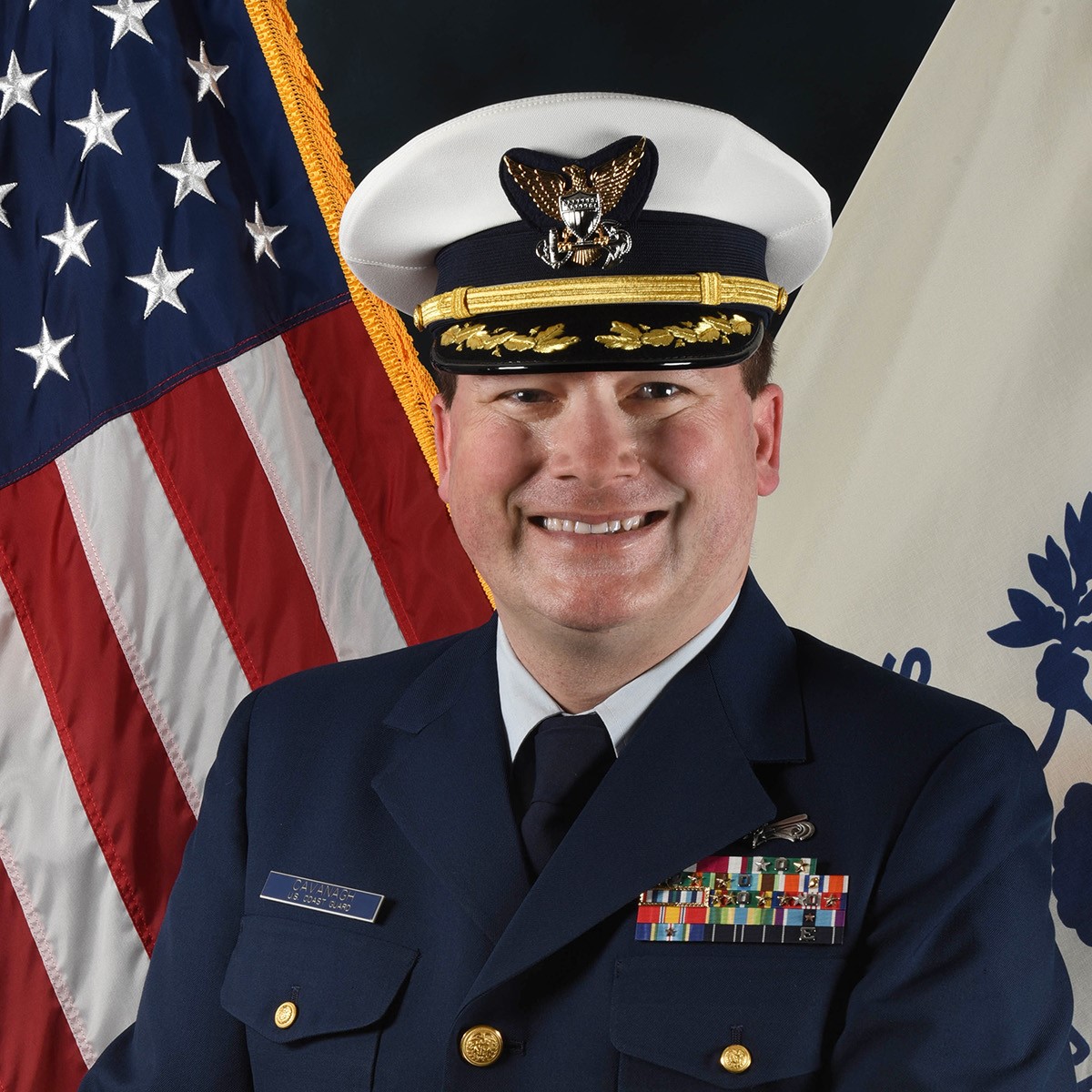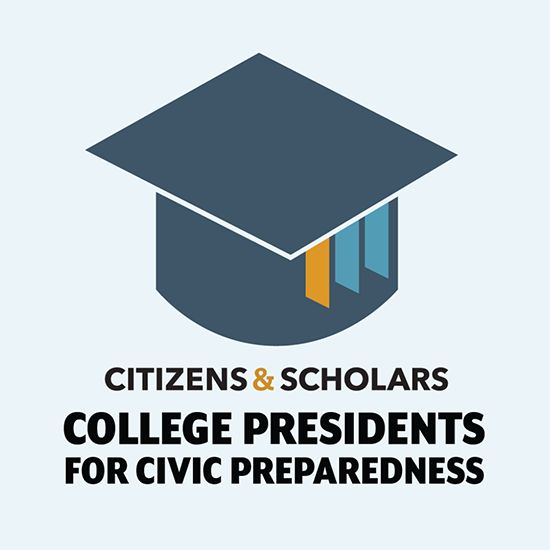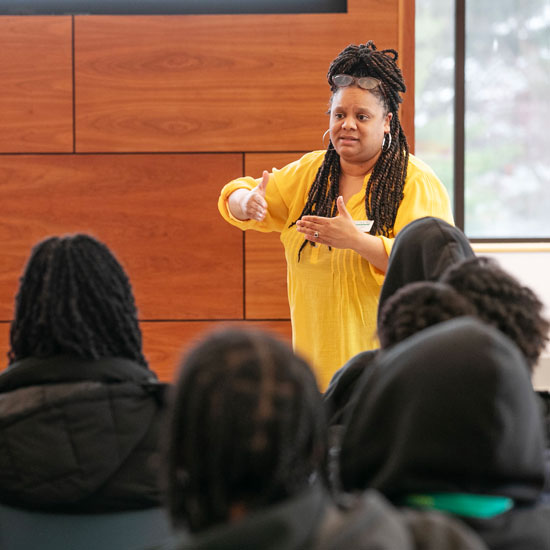Pattern in science, art, and more
"Pattern is how we create order out of chaos," says Tang Museum curator Rachel Seligman '91. It's a concept explored from multiple angles in Sixfold Symmetry: Pattern in Art and Science, an exhibition curated with faculty and integrated into courses across the disciplines.
Using a wide range of artworks and artifacts to explore the human relationship with pattern, Seligman and co-curator Rachel Roe-Dale, a math professor, collaborated with a wide range of other faculty members: art historian Lisa Aronson, Spanish professor Grace Burton, computer scientist Michael Eckmann, psychologist Rebecca Johnson, musicologist Liz Macy, biologist Josh Ness, religion professor Greg Spinner, and artist Sarah Sweeney. Watch the Creative Minute video on the exhibit below:
Many of the Tang’s interdisciplinary collaborations begin with a "big picture" question, and in this case, says Seligman, it was "Why do humans seek out, create, replicate pattern? Why do we desire it, and how do we use it?"
One answer, she suggests, is that "pattern helps us make sense of the world around us, in all aspects of our lives." But pattern also exists in nature, she notes—for example, "in the Fibonacci sequence of a spiraling nautilus shell, and in the way water forms crystals to create snowflakes." Perhaps we are drawn to "some inherent beauty" in these natural patterns.
The perfect snowflake?
Certainly scientists and mathematicians look for pattern, says Rachel Roe-Dale. "In many cases it exists a priori in nature as a fundamental component." She finds it particularly fascinating "when we can create a model using equations that can actually generate that same natural form."
"Why do humans seek out,
create, replicate pattern?"
Artist-scientists Janko Gravner and David Griffeath, in the show's Modeling Snow Crystal Growth, tease the science-and-nature relationship with computer-simulated images inspired by the century-old microscopy work of Wilson "Snowflake" Bentley, whose photographs are displayed nearby. Both old and new invite close scrutiny. Here is the fractal patterning modeled in the Fibonacci sequence, here the sixfold symmetry of the show's title. But while the six sides of the snowflakes "are fundamentally equivalent," says Roe-Dale, "there are slight imperfections." The computer model is based on the physics of water molecules either adhering to a snowflake or starting a new branch of crystals. In that small randomness, art imitates nature.
Roe-Dale, who had never done museum work before, says being part of a curatorial project has "opened up a new door for me. I've become really interested in how we can integrate the museum experience with our science and math classes on a more regular basis."
Symbology, rhythm, and line
Grace Burton is bringing her "Communicating in Spanish" class especially to see the eye-tracking installation she worked on with psychologist Rebecca Johnson. They approach patterns as essential parts of human experience and templates through which humans sense the world. Take the phenomenon of "expectancy grammar": as we learn to expect certain patterns when we read, our eyes and brains process short or common words faster than others. In the gallery, videos demonstrate the increasingly orderly eye movement patterns of a pre-reader, a beginning reader, and a skilled reader, as well as a showing the breakdown of that order in a reader who has had a stroke.
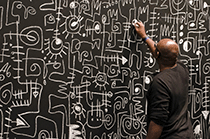
Ekpuk plies his chalk at the Tang.
Skidmore's Gamelan Banyu Wali ensemble, coached by Liz Macy, has been performing in the gallery's Balinese gamelan installation, which invites listeners to appreciate the cyclic patterning of the music. Their next onsite concert is Thursday, Dec. 8, at 7 pm.
A number of classes came in September to talk with and observe Nigerian-American artist Victor Ekpuk as he created an intricate chalk drawing, inspired by the traditional Nsibidi script symbols of the Igbo culture's ukara cloth, on two blackened gallery walls. Joe Underwood's art history class "Ephemeral Exhibitions" was a natural: as with all of Ekpuk's site-specific wall drawings, this one will be erased when the exhibition closes in the spring. Class member Claire Bernson '17, who had helped research artists as an exhibitions assistant at the Tang, felt fortunate "to watch him work and discuss his process."
Students watched as he added
detail, working fast, chalk dust flying,
long continuous lines forming
intricate patterns.
Others watching Ekpuk at work ranged from Bina Gogineni and her postcolonial literature class "The Empire Strikes Back" to Mark Hofmann and his Scribner Seminar "Math and Escher" to Hédi Jouad with his Scribner Seminar "Africa Through its Changing Cinema."
Ekpuk responded to some thoughtful and complex questions from the students and talked about the way his work has evolved from Nsibidi-related shapes to his own very personal vocabulary of forms. Students watched as he added detail to the wall, working fast, chalk dust flying, long continuous lines forming intricate patterns.
Navigating and transcending
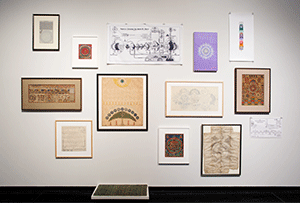
A gallery wall in Sixfold Symmetry
Greg Spinner brought religion students and colleagues to explore the gallery wall of cosmograms—maps of space or time, such as Tibetan mandalas, Shaker gift drawings, and Kabbalistic diagrams—created for visualizing salvation or enlightenment. Spinner observes, "A fundamental aspect that religions share is the ability to conceptualize a cosmos, to conceive a world that is organized, orchestrated, patterned, and regulated and in which human existence has its proper order, its proper place." Whether from Jewish, Buddhist, or Christian traditions, he says, the cosmograms are to "help you navigate toward a goal, transcending this mundane reality to get to heaven or reach enlightenment."
Art history major Bernson, when leading patrons through the exhibition in her job as a Tang guide, typically asks "what they think of when they picture pattern, and the general consensus involves plaids or geometric shapes." But after viewing the show, she finds, the visitors begin to think about pattern as more than visual—"it is underneath almost all things we do."
Sixfold Symmetry runs through March 12, 2017; hours and information are here. Roe-Dale and Sweeney will give a curators' tour on Thursday, Dec. 1, at 12 noon. —Kathryn Gallien
